Key Takeaways:
- Cucumber plants have distinct growth stages, starting from selecting and sowing seeds to fruit development and harvest. Understanding these stages is essential for successful cucumber cultivation.
- Proper care and attention during each growth stage are crucial for healthy cucumber plants. This includes providing adequate water, nutrients, and trellising for vine support.
- Cucumber plants require proper pollination for fruit development. Familiarizing yourself with the male and female flowers of cucumber plants will help ensure successful pollination.
Introduction to Cucumber Growth Stages
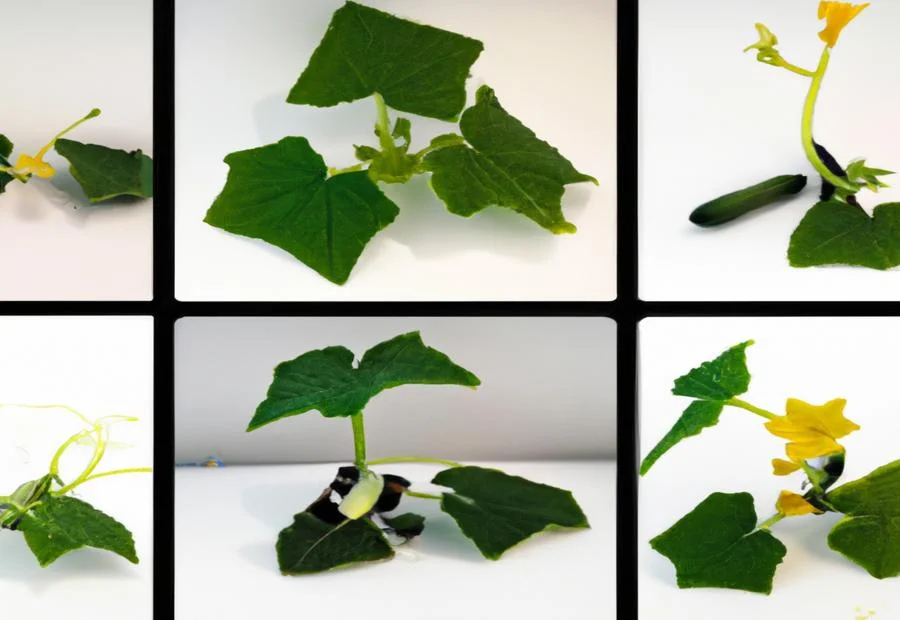
Photo Credits: Fortheloveofgardeners.Com by Alexander Moore
Cucumbers, a delicious addition to salads and refreshing summer treat, go through several growth stages before they reach our plates. In this section, we will explore the journey of a cucumber plant, from seed to harvest. We’ll begin by understanding the different cucumber plant varieties and how they impact the growth process. Then, we’ll dive into the crucial steps of selecting and sowing cucumber seeds, setting the stage for a successful cucumber growing adventure.
Understanding Cucumber Plant Varieties
Cucumber plant varieties are diverse and it’s essential to understand them for successful cultivation. Here are 3 key points:
- Varieties differ in growth habits, fruit size and disease resistance. Common types include slicing cucumbers, pickling cucumbers and burpless cucumbers.
- Each variety has its own requirements for temperature, soil type and sunlight. Choose a variety that suits the conditions of your garden.
- Knowing the characteristics of different varieties can help plan your planting schedule. Some mature faster than others, allowing for staggered harvests.
Now let’s look at the stages of cucumber growth:
- Germination: Proper watering and temperature control are key for successful seed germination. Don’t oversaturate the soil.
- Vegetative Growth: Fertilization and managing pests or diseases are vital during this stage.
- Flowering: Appropriate pollination techniques can increase fruit production.
- Fruit Development: Monitor fruit ripeness to harvest cucumbers at peak flavor.
Cucumbers have been cultivated for centuries, and different varieties have been developed through selective breeding and hybridization. Knowing the history of cucumber cultivation can provide insights into the development and characteristics of cucumber plant varieties.
Selecting and sowing cucumber seeds? It’s like playing matchmaker for plants, but with more dirt and less romance!
Selecting and Sowing Cucumber Seeds
Selecting and sowing cucumber seeds is key. Carefully choose the right variety of seeds and plant them correctly for successful germination and healthy growth. Here’s how:
- Choose the type – slicing, pickling, specialty varieties – that suits your preferences and growing conditions.
- Prepare the soil. Loosen it. Remove weeds and debris. Amend with compost or aged manure.
- Plant seeds half an inch deep. Space two to three feet apart in rows or hills. Keep soil moist during germination period.
- Water regularly. Check for pests and diseases. Thin out seedlings for proper spacing.
Cucumbers love warm weather and full sun. Also, they benefit from a trellis or support system. The tiny seed holds the potential for a cucumber empire!
Germination and Early Seedling Stage
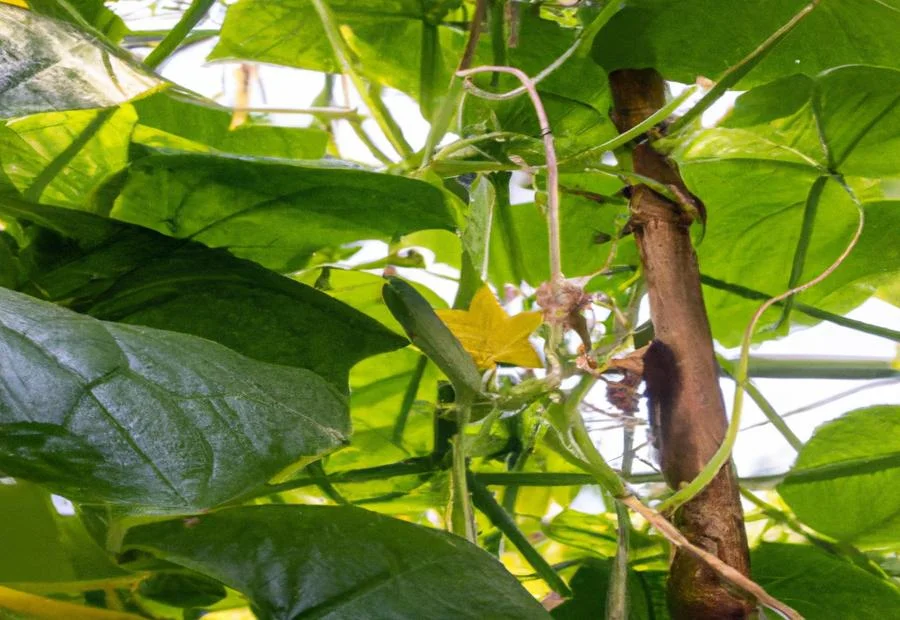
Photo Credits: Fortheloveofgardeners.Com by Richard Nelson
Cucumber growth has a crucial period – the germination and early seedling stage. Knowing the process and requirements during this time is vital for successful cucumber cultivation. Here are the steps to follow:
- Sowing – High-quality cucumber seeds in nutrient-rich soil, with a depth of 1 inch.
- Water – Consistently moist but not saturated. Regular watering is essential.
- Temperature and Lighting – Optimal germination at 70°F-95°F (21°C-35°C). Provide sufficient light.
- Seedling Care – Thin overcrowded seedlings. Monitor for pests and diseases.
- Transplanting – When the seedlings have 3-4 true leaves, harden them off before transplanting. During the germination stage, maintain moisture, temperature, and light for optimal growth. Avoid disturbance to the delicate roots and shoots.
Cucumbers have a long history. Originating in South Asia, they were first cultivated in Ancient Egypt and Mesopotamia. Early varieties were bitter and spiny. Through centuries of cultivation and selective breeding, modern cucumbers have been achieved. The germination and early seedling stage are key components to improving cucumber varieties and yields. This stage is still critical for healthy and flavorful cucumbers.
Vegetative Growth and Care for Cucumber Plants
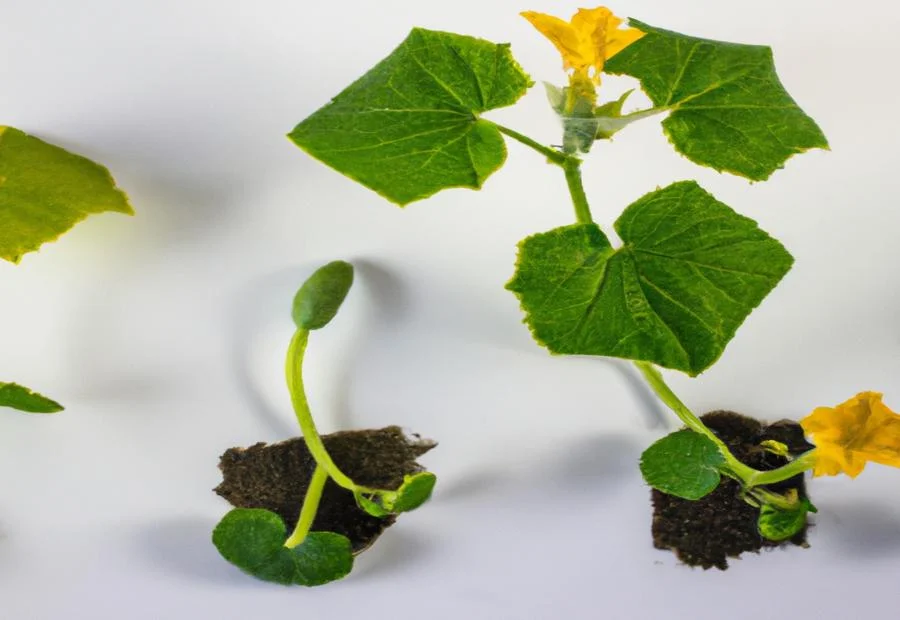
Photo Credits: Fortheloveofgardeners.Com by Gerald Smith
In the world of cucumber gardening, understanding the vegetative growth and care is key to a successful harvest. Get ready to discover pro tips for taking care of cucumber plants and learn about the different stages of cucumber plant growth. From seed to harvest, this section will provide you with valuable insights to ensure your cucumber plants thrive and yield abundant, juicy cucumbers. Let’s dive in and unlock the secrets to nurturing vibrant cucumber plants!
Pro Tip: Taking Care of Cucumber Plants
Caring for cucumber plants involves some expert advice. To make sure they grow strongly and produce lots of fruit, you must follow these six steps:
- Water them deeply. Do it once or twice a week, so the soil is moist but not waterlogged.
- Put them in a spot that gets 6-8 hours of sun each day. Without enough sun, the plants will be weak and won’t produce many fruits.
- The soil should be well-drained, fertile, and rich in organic matter. Test it often to keep the pH level between 5.5 and 7.0. Cover the plants with organic mulch to maintain moisture.
- Feed them NPK (nitrogen, phosphorus, and potassium) fertilizer every two to three weeks. This will help them have strong foliage and lots of fruits.
- Give them support like trellises or stakes. This helps with air circulation, disease prevention, and straightening the fruit.
- Check for pests and diseases like powdery mildew or cucumber beetles. If you find any, use organic fungicides or insecticidal soap.
Finally, rotate the crops every season to stop diseases building up in the soil.
By following these tips and giving your cucumber plants the attention they need, you’ll get a great harvest and healthy plants.
Stages of Cucumber Plant Growth Life Cycle
Cucumber plants have a unique life cycle with various stages. Knowing these stages is key to successful cultivation.
The journey starts with the sowing of seeds and emergence of seedlings. This is followed by rapid vegetative growth, producing leaves, stems, and branches. Caring properly – water, prune, and provide necessary nutrients – is essential.
Next, male and female flowers are produced, and pollination occurs to transfer pollen from male to female flowers. This leads to cucumber growth and maturity, then harvest time.
Once harvested, cucumbers can be stored under cool temperatures and high humidity. Different cucumber types have different growth requirements, so it’s important to select the right variety.
Lastly, growers must constantly monitor for diseases or pests. Doing so ensures successful cucumber cultivation and a bountiful harvest.
Ah, the beauty of cucumber love!
Flowering and Pollination of Cucumber Plants

Photo Credits: Fortheloveofgardeners.Com by Gregory Jackson
Cucumber plants go through a fascinating process of flowering and pollination, which greatly impacts their overall growth and yield. In this section, we will explore the different aspects of flowering and pollination in cucumber plants, specifically focusing on the male and female flowers. By understanding the roles and characteristics of these flowers, we can gain valuable insights into the reproductive cycle of cucumber plants and how successful pollination leads to the formation of tasty cucumbers.
Male and Female Flowers of Cucumber Plants
Male and female cucumber flowers have a key role in reproduction. Pollination leads to fruit formation. Male and female flowers differ in size, position and petals.
Male flowers are small and grow on long, thin stems. They don’t have petals and produce lots of pollen.
Female flowers are bigger, closer to the stem and have yellow petals. They also have ovaries that become cucumbers.
Pollination is essential for successful fruit growth. To attract bees and other pollinators, offer them a variety of flowering plants. This will help pollination and increase the chances of successful fruit formation.
Understanding the differences between male and female flowers and implementing pollination strategies will help gardeners get the most out of cucumber plants. When it’s time to harvest, you can enjoy the sweet reward of your hard work – just make sure to not pick a zucchini by mistake!
Fruit Development and Harvest Time
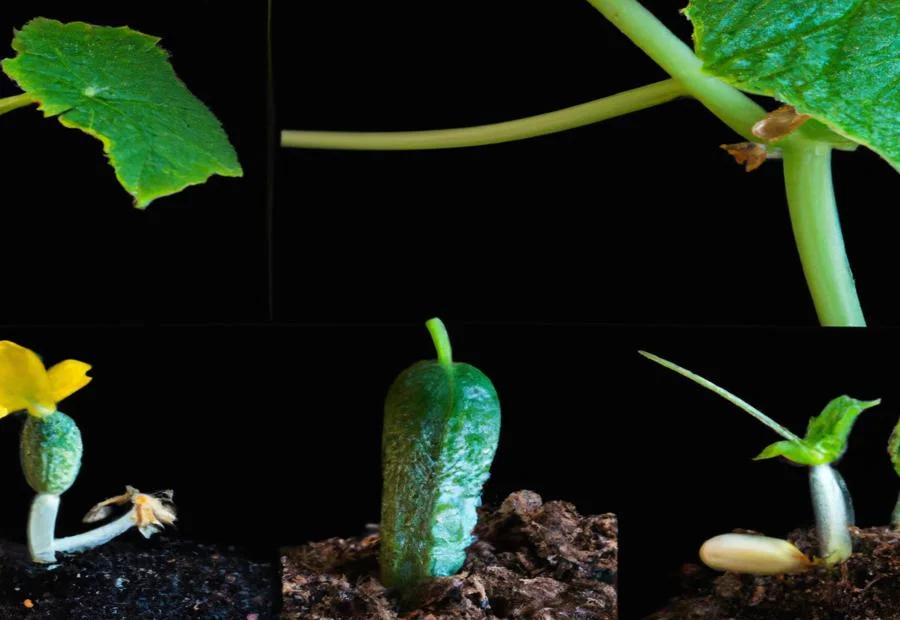
Photo Credits: Fortheloveofgardeners.Com by Billy Thomas
Cucumbers are one of the most coveted fruits in gardening, but knowing the best time to harvest them can make all the difference. In this section, we will explore fruit development and the optimal harvest time for cucumbers. Additionally, we’ll highlight the best techniques for harvesting cucumbers to ensure maximum flavor and texture. So, if you’re curious about when to pluck those crunchy cucumbers from your garden, keep reading for some valuable insights backed by expert knowledge.
Best Way to Harvest Cucumbers
- Check ripeness. Look for a firm texture and bright, uniform color. The size should match the variety.
- Use sharp tools. Gardening shears or a knife are best. Avoid twisting or pulling the cucumber off.
- Cut near the stem. Be careful not to damage the plant. Gently place in a basket or container.
- Harvest regularly. Every few days, once they reach maturity. This prevents over-ripening.
For successful cucumber growth, provide adequate support, regular watering and fertilization, and monitor for pests and diseases. Also, understand male and female flowers for successful pollination and fruit development.
Tips for Proper Care at Each Cucumber Growth Stage
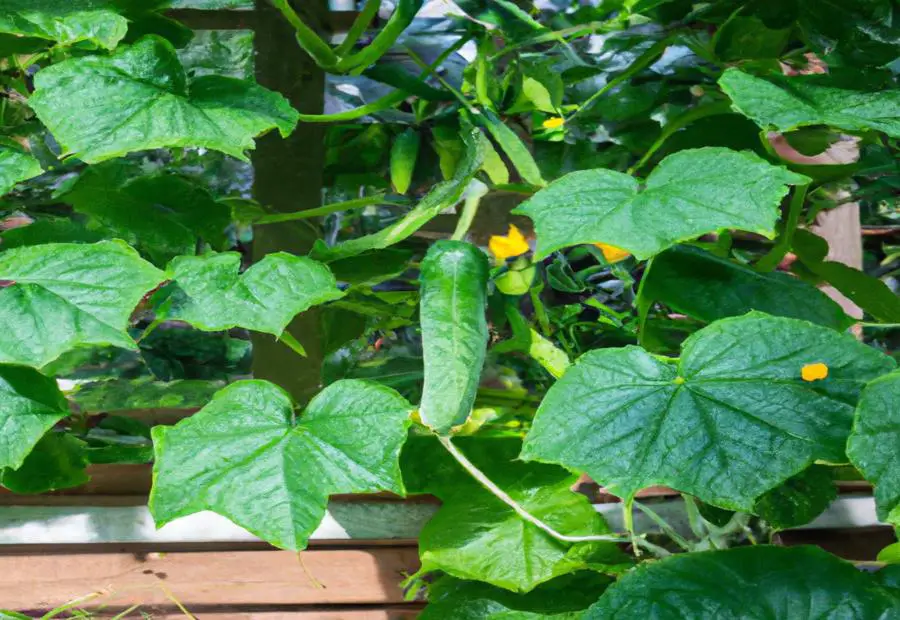
Photo Credits: Fortheloveofgardeners.Com by Michael Sanchez
Cucumber plants need special care during each phase of growth, to ensure a healthy harvest. Try these tips to look after your cucumber plants as they grow.
- Seed Germination: Plant cucumber seeds in well-drained soil, with a pH level between 6 and 7. Water the soil and provide lots of sunlight — aim for a temperature of 70-85 degrees Fahrenheit.
- Seedling Stage: Thin out the seedlings so they have enough room to grow. Give them 12-16 hours of sunlight daily, and water regularly — but, beware of overwatering.
- Vegetative Growth: Mulch the cucumber plants’ base to retain moisture and control weeds. Prune them to promote air circulation and prevent diseases. Fertilize them using a nitrogen-rich fertilizer to develop foliage.
- Flowering and Pollination: Bees and other pollinators help with fruit set, so avoid using pesticides that can harm them. Alternatively, you can use a brush or cotton swab to manually transfer pollen.
- Fruit Maturation: Check for ripe fruit. Harvest cucumbers when they reach 6-8 inches in length. Be on the lookout for pests and diseases, and take immediate action if you spot any.
By following these tips, you’ll give your cucumber plants the best chance of success. Remember to consider the variety, growing conditions, and any extra advice from seed suppliers or local gardening experts.
Storage and Preservation of Cucumbers

Photo Credits: Fortheloveofgardeners.Com by Andrew Hernandez
Cucumbers are prone to spoiling, so it is essential to take necessary steps to store and preserve them. To keep their flavor and texture intact, it is important to handle them correctly and store them correctly.
- Temperature and Humidity: Cucumbers are sensitive to temperature and humidity changes, so store them at a temperature of about 50°F (10°C) and 95% humidity. This helps keep them crisp and prevent them from becoming soft or mushy.
- Packaging and Placement: Keep cucumbers in a cool, dark place, away from sunlight and other fruits that emit ethylene gas. Wrap them in a paper towel and place them in a perforated plastic bag to retain moisture and avoid drying out. Avoid stacking cucumbers to avoid bruising.
- Length of Storage: Cucumbers are best consumed immediately after harvesting, but if you need to store them longer, select cucumbers without any soft spots, decay, or bruising and use within a week. Check and use as soon as possible for optimal quality.
It is important to note that cucumbers are highly perishable and should be consumed soon after purchase or harvest. Storing and preserving them correctly will help maintain their shelf life and taste.
Different Types of Cucumber and Their Growth Requirements
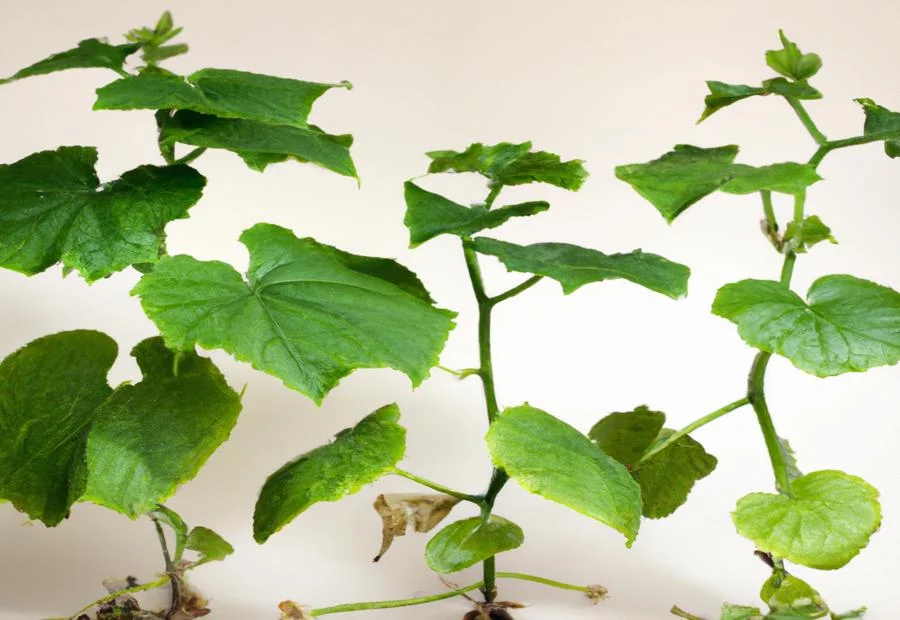
Photo Credits: Fortheloveofgardeners.Com by Frank Scott
Different cucumber types require special growth conditions. Knowing these is vital for successful cultivation. The comprehensive guide to cucumber growth stages gives useful insights.
To get a better view of cucumber varieties and their growth needs, a table can be created. This helps farmers and gardeners identify the best practices for each type. Note the unique details for each variety, such as temperature, soil, sunlight, and resistance to disease. These can improve growth and development.
The guide also shares cucumber history, which shows they have been cultivated for thousands of years and are a key part of various cultures and culinary traditions.
Benefits of Trellising Cucumber Vines
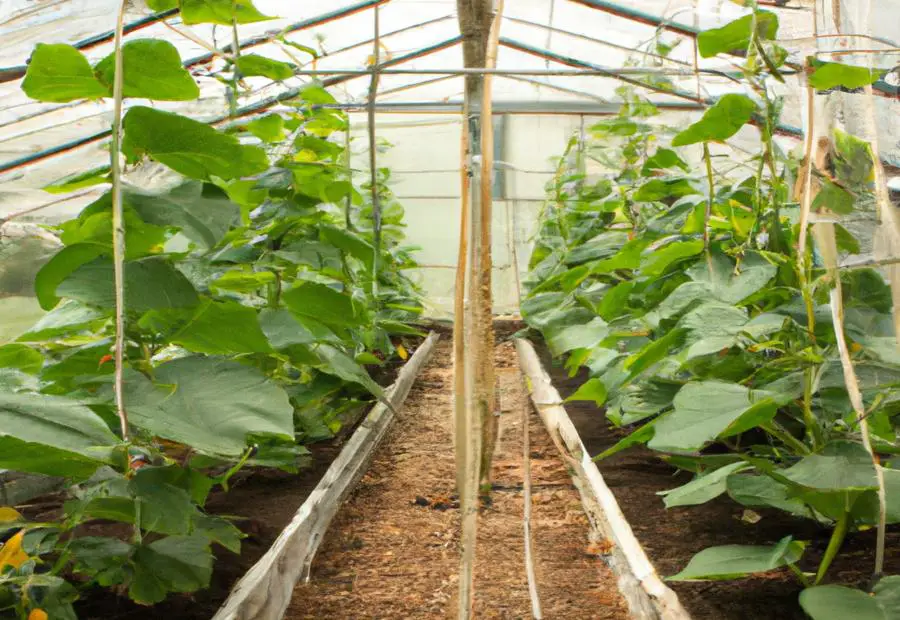
Photo Credits: Fortheloveofgardeners.Com by Keith Harris
Trellising cucumber vines can be extremely beneficial! It gives support, structure, and improved air circulation. This reduces the risk of disease. Plus, optimal sunlight exposure helps with photosynthesis, resulting in higher yields and better fruit quality.
Space efficiency is another benefit. Vertical growth requires less space, perfect for small gardens or urban settings. Plus, harvesting is easier. When vines grow vertically, it’s simpler to spot and pick ripe fruits.
Not to mention, trellising looks great! It creates an attractive display and reduces the risk of tripping over sprawling vines. All in all, trellising cucumber vines is a practical and efficient way to get the most out of your garden.
Troubleshooting Common Issues in Cucumber Growth

Photo Credits: Fortheloveofgardeners.Com by Randy Thompson
Cucumber growth can be disrupted by many issues. Knowing and solving these troubles is key to a great cucumber harvest.
First, germination failure may happen. Causes can be too little water or soil temperatures too low. To overcome this, make sure cucumber seeds are hydrated before planting and keep soil temp around 70°F.
Second, bad pollination can make cucumbers weird shapes or not fully grown. Bees and other pollinators help cucumber pollination – so create a friendly environment for them around the plants. Manual pollination can also be done with a brush or cotton swab.
Finally, cucumber plants are sensitive to pests and diseases. Examples include powdery mildew, cucumber beetles, and bacterial wilt. To beat these, use proper pest management. This includes inspecting plants regularly, using organic pesticides when needed, and crop rotation to stop pathogens from building up.
These tips are general – some issues might need special solutions. Being attentive and proactive in solving these common problems helps ensure cucumber plants will grow and be harvested successfully.
Conclusion and Final Thoughts
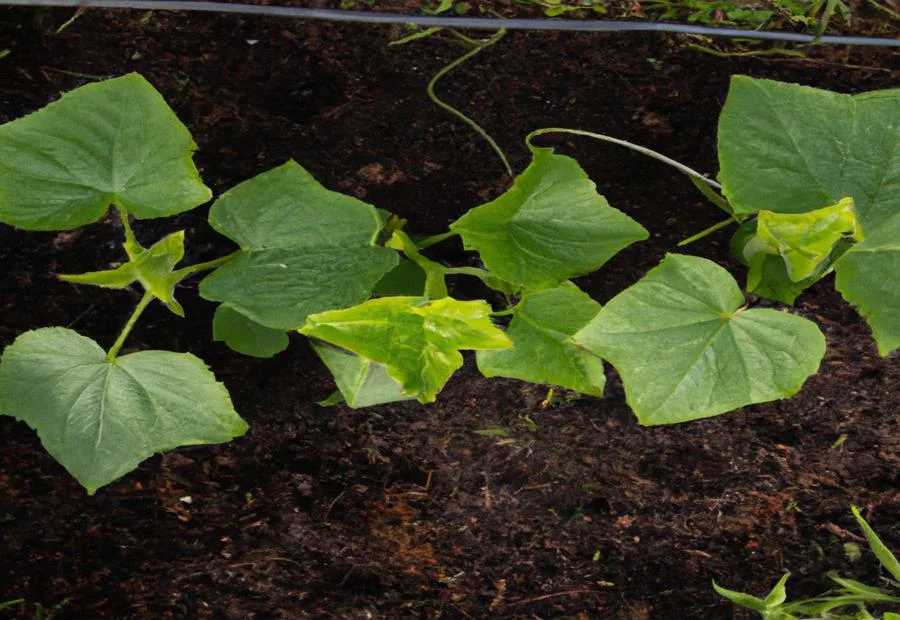
Photo Credits: Fortheloveofgardeners.Com by Daniel Ramirez
To wrap up, it is essential to comprehend the various growth stages of cucumbers for a thriving crop. By furnishing the obligatory care and attention at each stage, gardeners can relish a plentiful cucumber yield.
From seed germination to fruit production, suitable administration of watering, lighting, pollination, and pest eradication can aid in healthy growth and a scrumptious outcome.
Some Facts About A Comprehensive Guide to Cucumber Growth Stages: From Seed to Harvest:
- ✅ Cucumber plants have several stages of growth in their life cycle, including seed germination, vegetative growth, flowering and pollination, and fruit production and harvest. (Source: farmingthing.com)
- ✅ Cucumber seeds germinate in 3-10 days and the plant continues to grow until flowering in approximately 40 days. (Source: farmingthing.com)
- ✅ Cucumber production occurs between 40 and 70 days after germination. (Source: farmingthing.com)
- ✅ Cucumbers should be harvested while still immature to maintain plant productivity. (Source: farmingthing.com)
- ✅ Different cucumber varieties exist worldwide, including Persian, English, Lebanese, Kirby, American slicing, and Mexican sour gherkins. (Source: farmingthing.com)
FAQs about A Comprehensive Guide To Cucumber Growth Stages: From Seed To Harvest
FAQ 1: What are the different stages of cucumber growth?
Answer: Cucumber plants go through several stages of growth, including seed sowing, germination, seedling, vine growth, flowering, fruit development, and harvest.
FAQ 2: When should I sow cucumber seeds?
Answer: Cucumber seeds should be sown in late spring or early summer when the soil is warm enough for germination.
FAQ 3: What are the specific needs for growing cucumbers?
Answer: Cucumbers are warm-season crops that require a sunny spot, fertile soil with good drainage, consistent moisture, and plenty of sunshine.
FAQ 4: How long does it take for cucumber seeds to germinate?
Answer: Cucumber seeds typically take 3 to 10 days to germinate, depending on factors like soil temperature and moisture.
FAQ 5: How can I increase fruit production in my cucumber plants?
Answer: To increase fruit production in cucumber plants, provide consistent water, add fertilizer during the flowering stage, and make sure the plants receive adequate sunlight.
FAQ 6: Where can I get cucumber seeds?
Answer: Cucumber seeds can be obtained from online seed retailers or local plant retailers. They are also available in different varieties and interesting options.

A passionate gardener and founder of ForTheLoveOfGardeners.com. She shares her expertise to help you cultivate thriving gardens and find joy in the beauty of nature.

